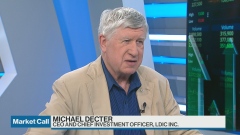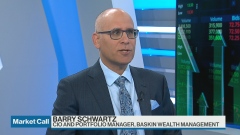Jun 22, 2023
Volkswagen’s EV battery effort keeps its executives up at night
, Bloomberg News
Taking Stock - Electric Vehicles in Canada
Volkswagen AG is trying to build up a leading battery maker to supply its ever-expanding fleet of electric vehicles — a feat so challenging, it’s leading to sleepless nights at Europe’s biggest carmaker.
The cell plants VW is setting up in Germany, Spain and Canada will underpin its shift away from the combustion engine. The automaker has earmarked €20 billion (US$22 billion) worth of investment through 2030 to try and turn its one-year-old battery unit PowerCo into a behemoth with 20,000 workers and enough capacity for 3 million EVs a year. VW on Wednesday mapped out a renewed profit push, with Chief Financial Officer Arno Antlitz telling reporters the company remains open to eventually selling shares in PowerCo.
Whereas Mercedes-Benz Group AG is tapping a planned Contemporary Amperex Technology Co. Ltd. factory in Hungary and has joined Stellantis NV and TotalEnergies SE in a €7.3 billion battery venture, VW is setting up some of its battery plants without partners. PowerCo will make unified cells designed to fit most of the group’s EV platforms, a strategy that could be a major advantage if the company can pull it off, but also risky.
The effort “keeps us awake at night,” Thomas Schmall, VW’s technology chief, who also chairs PowerCo, said in an interview with Bloomberg Television. Schmall said he’s confident that VW’s battery business will be able to meet the group’s demand and also sell to third parties
Here are highlights from the conversation with Schmall, edited for length and clarity:
VW is well versed in building auto factories. How is setting up a battery plant different
It’s totally different. I think it’s one of the biggest challenges we as car guys will face. And it’s only possible because we are looking for a perfect team and have some experience doing that, technology-wise. As you know, we are a little bit behind existing players, so we need to catch up.
What can you do to avoid some of the problems your competitors have had?
Scaling up, I think we can match that at Volkswagen. We have been doing it for years worldwide. The advantage of PowerCo is that it has the whole firepower of a big group like Volkswagen, and the agility of its own legal entity to move fast.
What are the bottlenecks and the things you need to smooth out?
How much time do you have? Because everything is a challenge in that business. It’s not only a battery factory, it starts with people. There’s only a handful around the world with knowledge about the battery business that will be available. Equipment to ramp up factories is a challenge. Critical minerals is a challenge.
Will you look at setting up facilities in Asia to service the Volkswagen brands there?
The strategy that we have is not that we try to do 100 per cent of our demand worldwide by our own. We are focusing on Europe and North America; China, we will do with our partners. We are invested in Gotion and we have perfect contacts with other local cell suppliers, which gives us the freedom to have the cells in the volume we need.
PowerCo will supply all of Volkswagen. Will it also service other carmakers and businesses outside of mobility?
The first step is that we cover our demand, which is really high. But we are looking also for third-market business and already have the first customers. One is Ford, because they are basing their cars on our MEB electric-vehicle platform. And the second one will be Mahindra, which will use our technology with the unified cell concept. We are looking for more, but this will be a second and long-term step.
There’s huge opportunity in what is a fairly new technology. What are you working on?
We are all dreaming to make cell production cheaper. We just announced the dry-coating process. It’s a game-changer — you need 30 per cent less energy, 50 per cent less space, so you have a lot of advantages in producing. We’re looking for the best in range and charging power. If you come to solid state cells from 2027 or 2028 onward, they’ll give you the next big step, roughly halving the charging time.
Explain the dry-coating process.
It’s like printing a newspaper. It takes out the liquid in the chemistry, which means you can cut out all ovens in the process. We are doing this with a German company called Koenig & Bauer, a company focused on rolling machines for newspapers. Who is still reading paper newspapers these days? I am, but I’m one of the last ones. So in the future, they will probably make equipment for cell production.
Is Europe thinking about battery raw material-sourcing policy the right way?
The raw material will not come out of Europe only. The big resources are outside of Europe. We’re talking about Australia, Indonesia, South America, North America. And as it’s a critical bottleneck, we are working in a kind of closed-loop approach. We are not making only hardware, batteries, cells. It starts with the mining that we need to take care of. We’re making custom material, putting it in the first life in a car, then in a second life in a storage system and then recycling it at the end of the lifetime.
Several carmakers have complained that the rules of origin kicking in for the E.U. and U.K. next year are unrealistic. What’s your view?
Let us first work more and then see if it’s realistic or not. I think it’s a little bit too early to say it’s not achievable. We need to put more speed in that. We will come to a point where we need to localize more technology. It’s not only cell production, it’s also going to be cathode material production.







